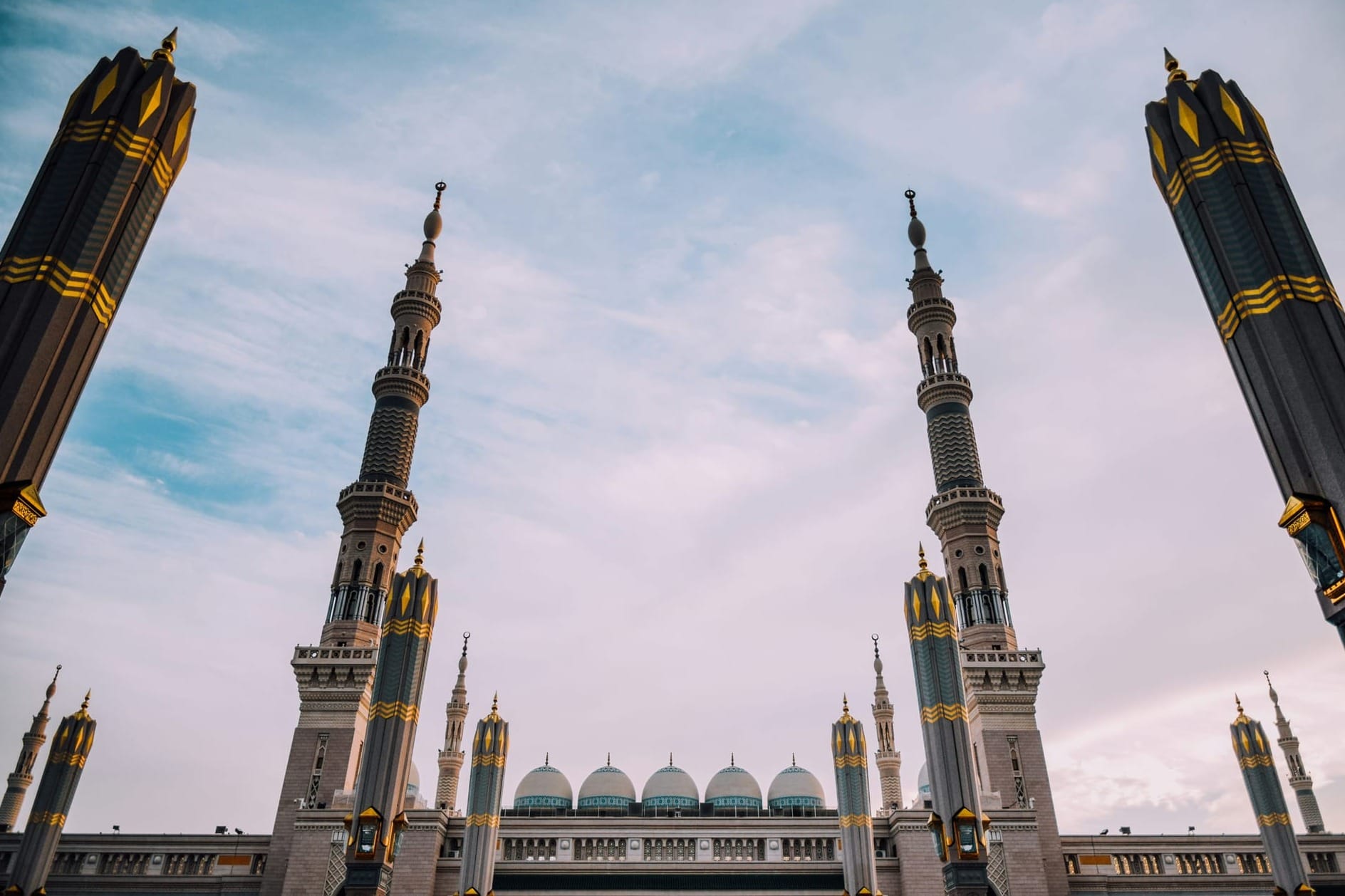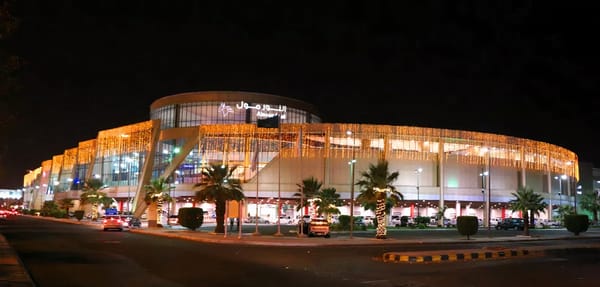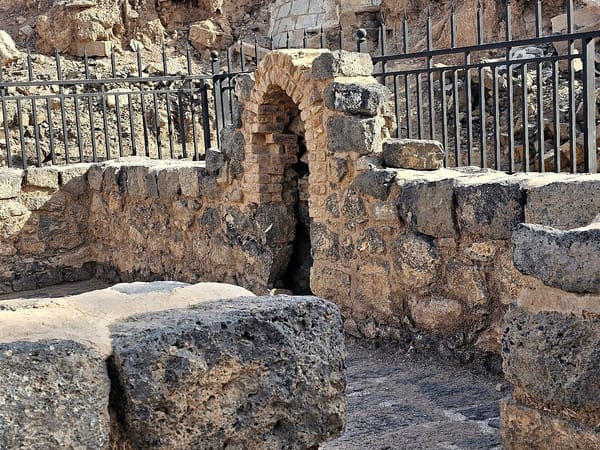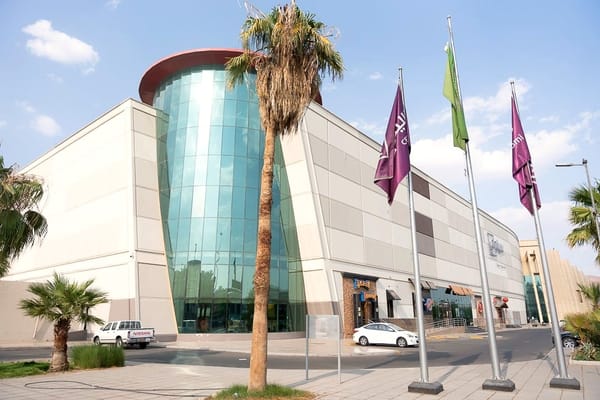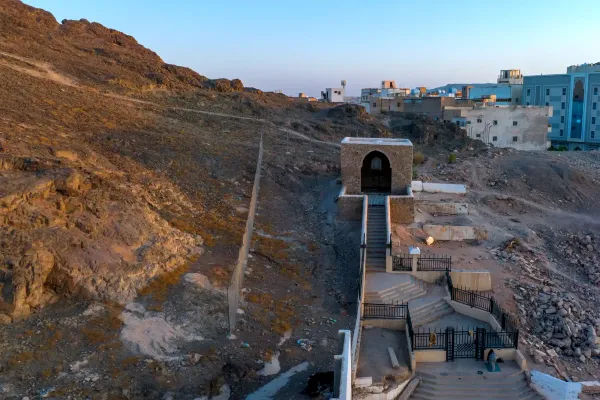Madinah, the radiant city of the Prophet Muhammad (ﷺ), is more than just a holy destination—it's a city steeped in spiritual legacy. Home to a remarkable collection of mosques (Masjid), each with its own story and significance, exploring them offers a deeper connection to Islamic history and faith.
Whether you're on a pilgrimage or simply curious about the Islamic roots embedded in the city's streets, visiting Madinah’s mosques is a moving experience. Convenient transportation options like the Hop-On Hop-Off sightseeing bus make this journey even easier, especially for those with limited time.
1. Masjid-e-Nabawi (The Prophet's Mosque)
Established in 622 CE by Prophet Muhammad (ﷺ), Al-Masjid an-Nabawi stands as the second holiest mosque in Islam. Originally a modest structure adjacent to the Prophet's (ﷺ) residence, it has undergone numerous expansions, evolving into a vast complex that can accommodate over a million worshippers. The mosque houses the revered Green Dome, beneath which lie the tombs of the Prophet (ﷺ) and Caliphs Abu Bakr and Umar (RA). The Rawdah ash-Shareefah, an area between the Prophet's (ﷺ) tomb and pulpit, is considered a garden from the gardens of Paradise, making it a focal point for pilgrims.
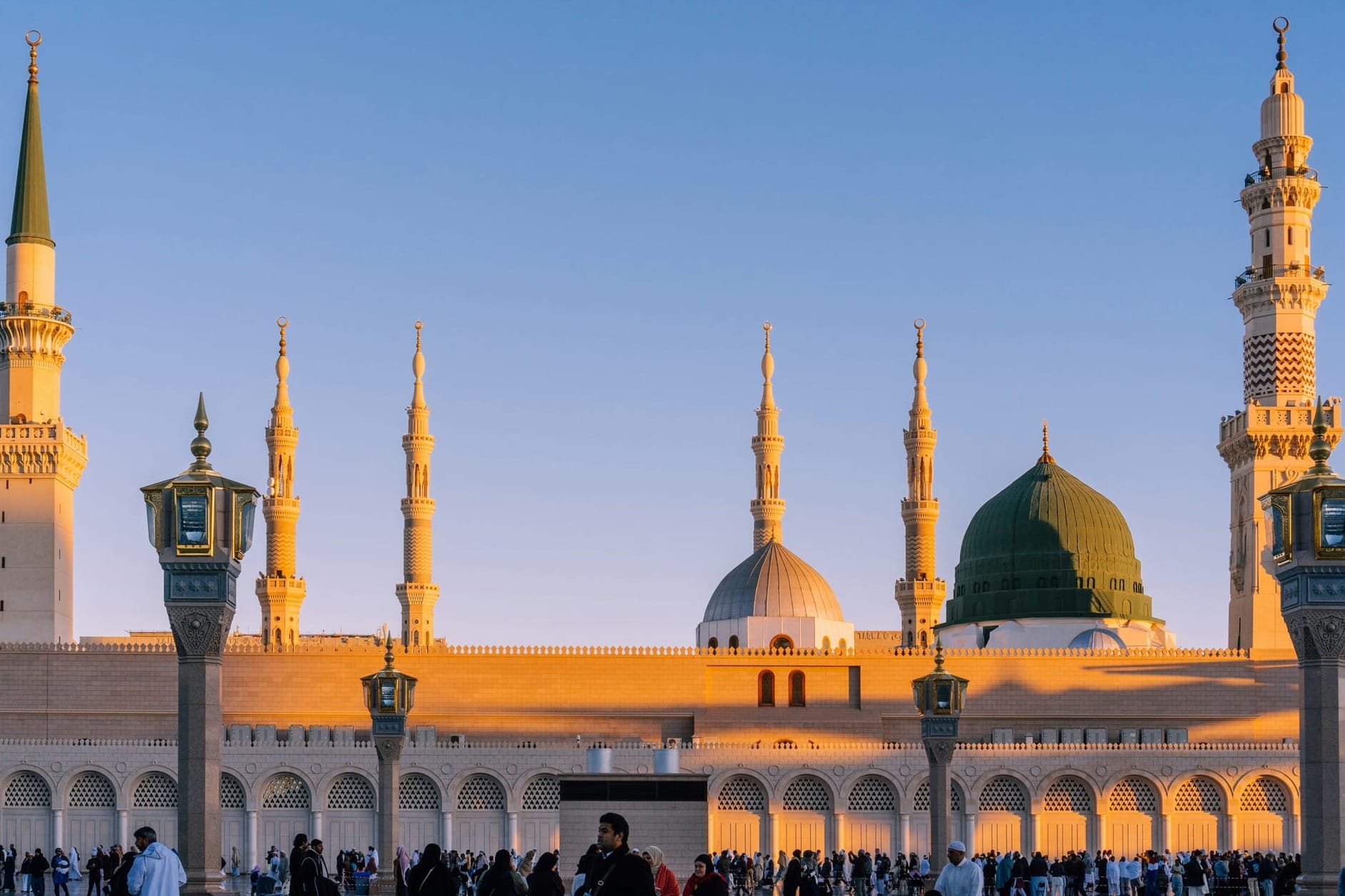
📍Location: Central Madinah
Highlights:
- The Green Dome
- Rawdah
- Historic minarets
- Retractable Umbrella's in the courtyards
2. Quba Mosque
Recognized as the first mosque in Islam, Quba Mosque's foundation was laid by Prophet Muhammad (ﷺ) upon his arrival in Madinah. The Prophet (ﷺ) frequently visited this mosque, emphasizing its significance. Praying two raka'ahs here is believed to hold the reward of an Umrah. Quba Masjid has been expanded to accommodate over 30,000 worshippers and features six domes and four minarets, reflecting a harmonious blend of traditional and contemporary Islamic architecture.
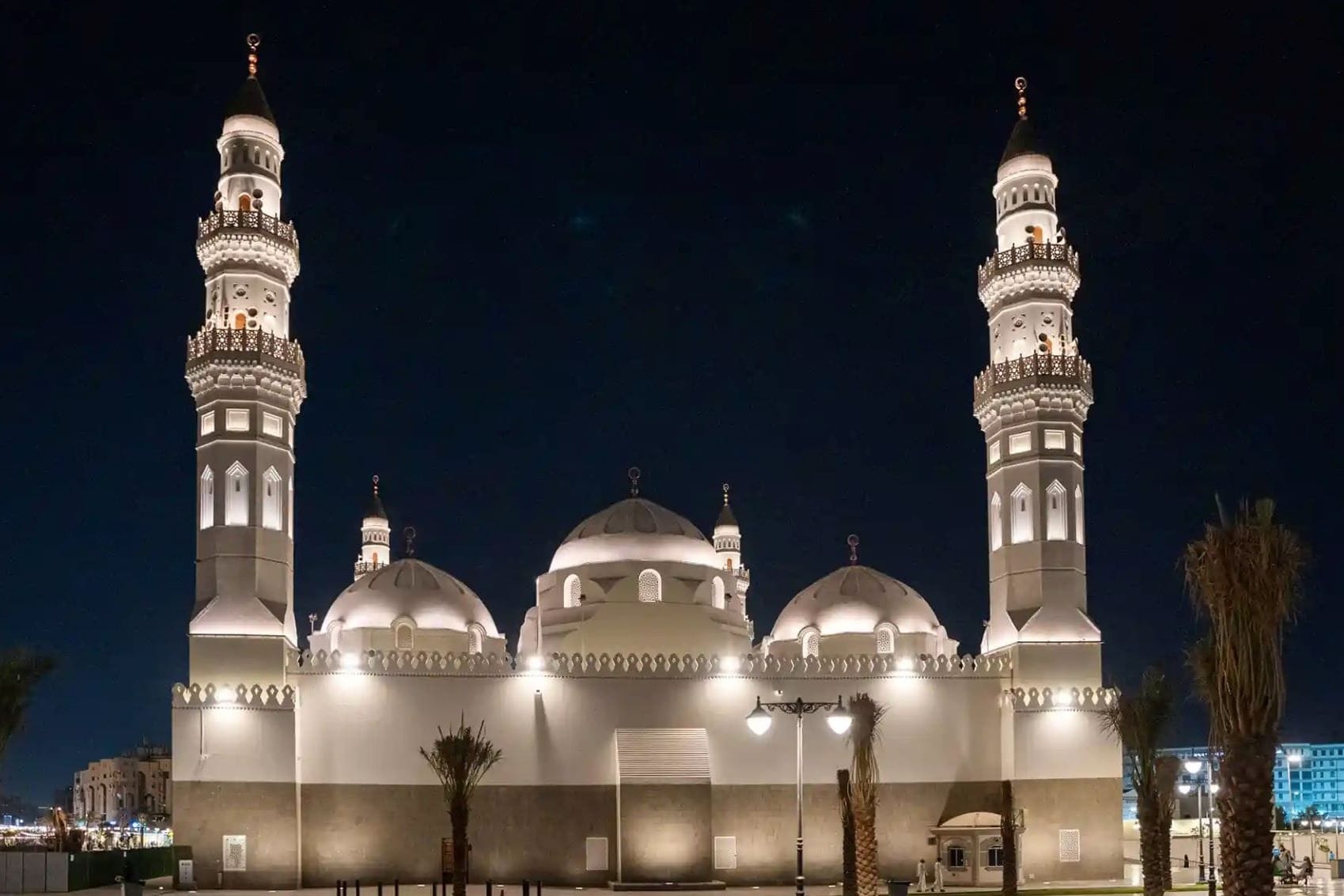
📍Location: Quba District, approximately 6 km from Al-Masjid an-Nabawi
Highlights:
- First Masjid in Islam
- Virtue of prayer equivalent to Umrah
- Architectural elegance
3. Masjid al-Qiblatayn (Mosque of the Two Qiblas)
Masjid al-Qiblatayn is historically significant as the site where the Qibla (direction of prayer) was divinely changed from Jerusalem to Makkah during a congregational prayer led by the Prophet Muhammad (ﷺ). This pivotal event symbolizes the establishment of a distinct Islamic identity. The mosque features two mihrabs (prayer niches) indicating both directions, serving as a testament to this momentous occasion.
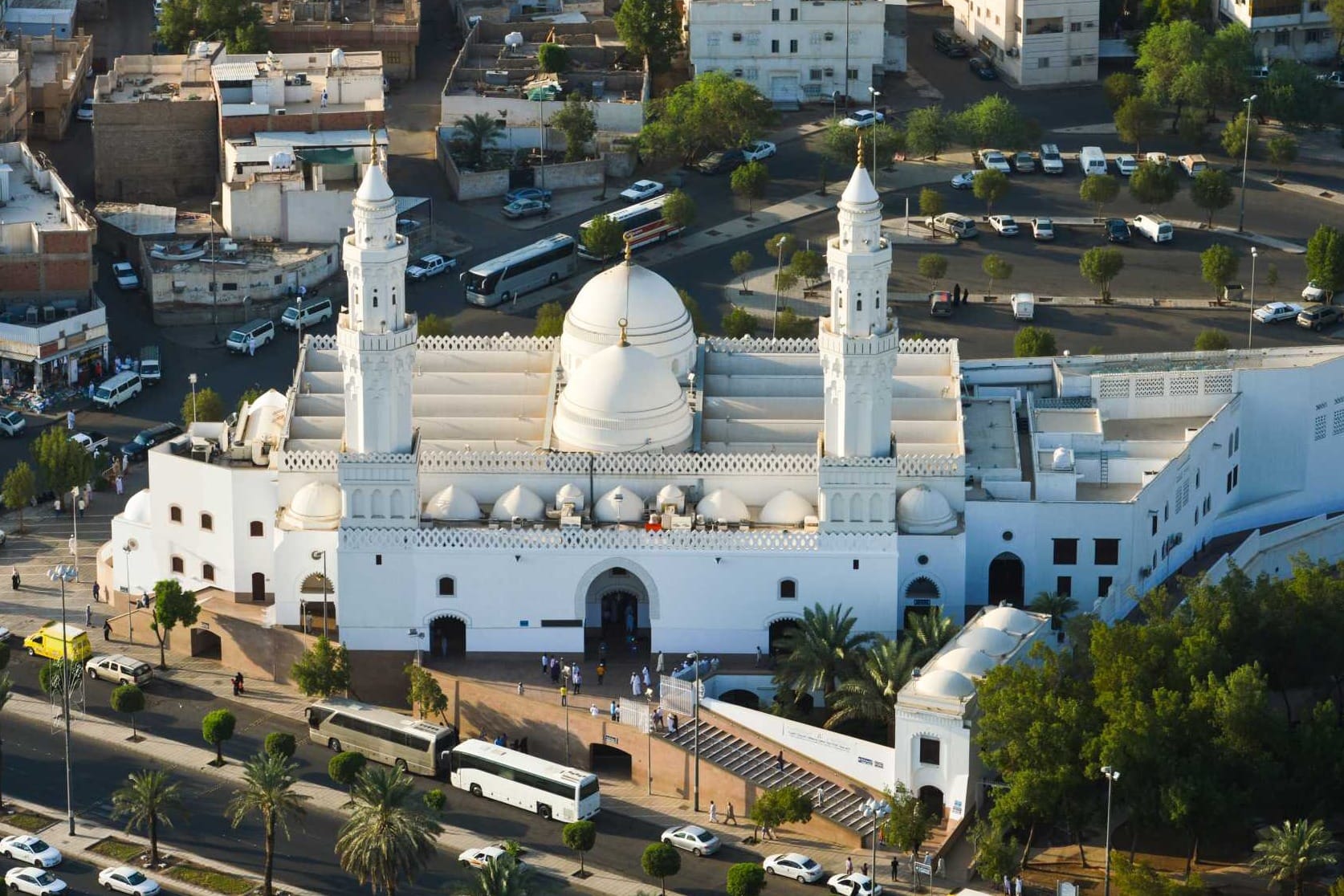
📍Location: Northwest Madinah
Highlights:
- Two mihrabs representing the change in Qibla
- Historical significance in Islamic tradition
- Modern architectural design
4. Al-Ghamama Mosque
Al-Ghamama Mosque, located near Al-Masjid an-Nabawi, is believed to be the site where Prophet Muhammad (ﷺ) performed the Eid prayers during the last years of his life. The name "Ghamama," meaning "cloud," refers to an event where a cloud is said to have shaded the Prophet (ﷺ) during prayer. The mosque's Ottoman-era architecture, characterized by multiple domes and a single minaret, adds to its historical charm.
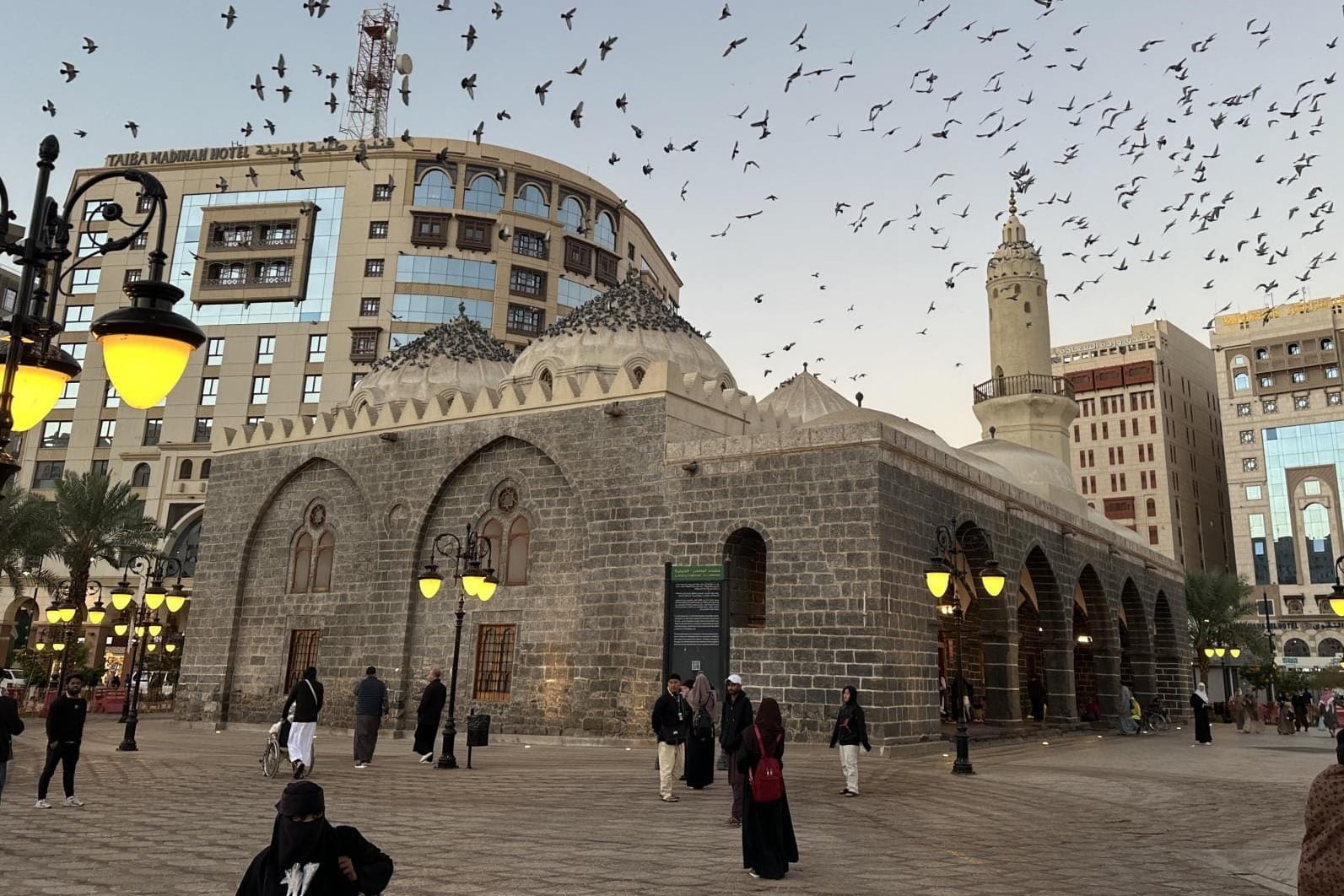
📍Location: Near Masjid-e-Nabawi
Highlights:
- Site of the Prophet's (ﷺ) Eid prayers
- Ottoman architectural style
- Proximity to the Prophet's Mosque
5. Masjid al-Jummah (Friday Mosque)
Masjid al-Jummah marks the site where Prophet Muhammad (ﷺ) led the first Friday congregational prayer in Madinah. This event signifies the establishment of the communal aspects of Islamic worship. The mosque has been rebuilt and renovated over the centuries, with the current structure featuring five domes and a single minaret, accommodating around 650 worshippers.
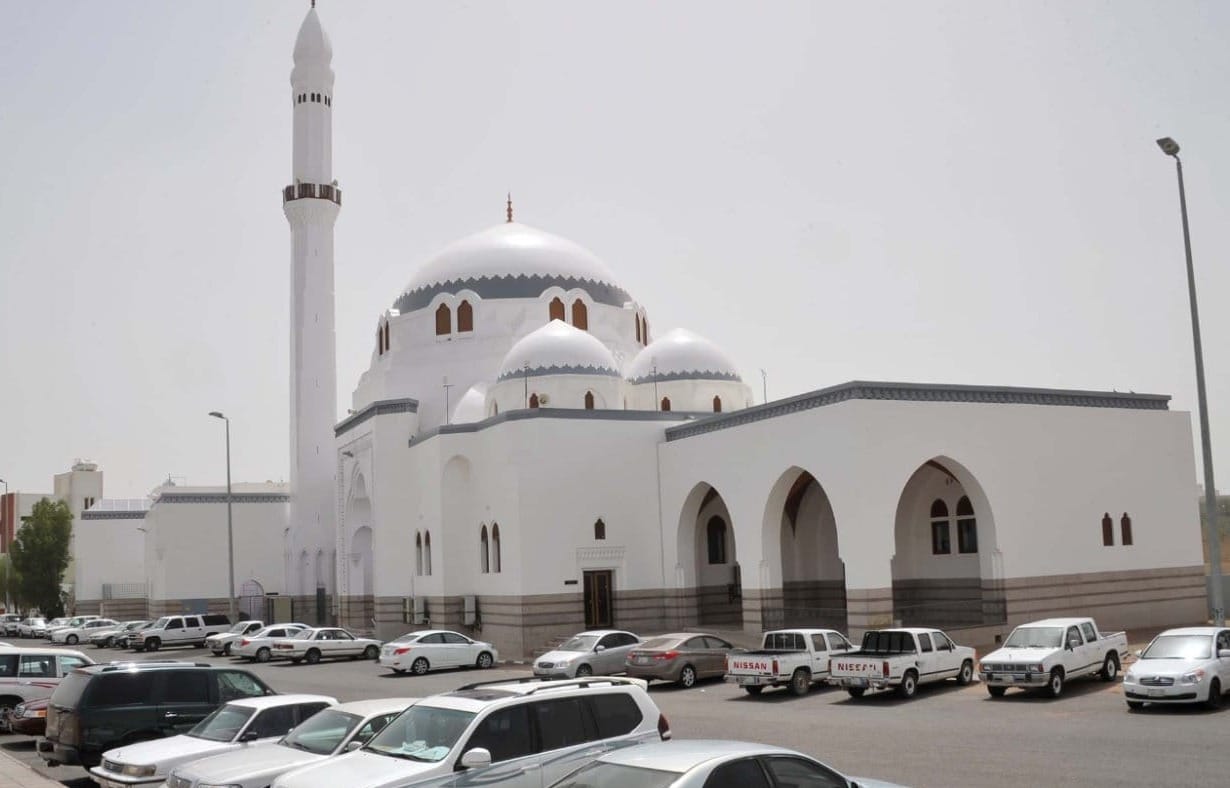
📍Location: Approximately 2.5 km from Al-Masjid an-Nabawi
Highlights:
- Site of the first Jumu'ah prayer led by the Prophet (ﷺ)
- Architectural features reflecting Islamic heritage
- Peaceful environment for worship
6. Masjid Bilal ibn Rabah
This mosque honors Bilal ibn Rabah (RA), the Prophet’s (ﷺ) devoted muezzin. He is known for his iconic voice calling Muslims to prayer, especially on the day Makkah was conquered. While he later moved away from Madinah, this mosque is dedicated to his role and legacy in early Islam.
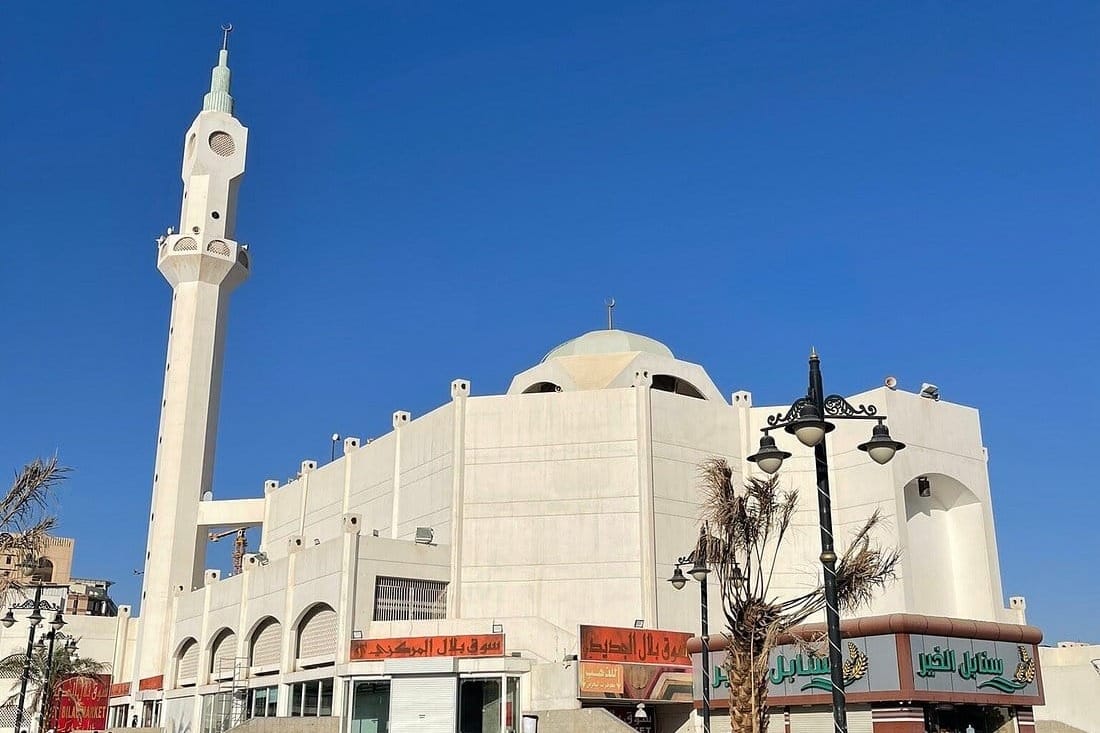
📍 Location: Near Al-Masjid an-Nabawi
- Highlights:
- Honors Islam’s first muezzin
- Symbolizes perseverance and faith
- A deeply emotional site for visitors familiar with Bilal’s story
7. Masjid Al-Ijabah (Mosque of the Response)
This lesser-known but spiritually rich mosque is where the Prophet (ﷺ) made a heartfelt du'a, asking Allah for three things. Two of those prayers were granted immediately. It’s a place for those seeking solace, reflection, and spiritual connection through the power of prayer.
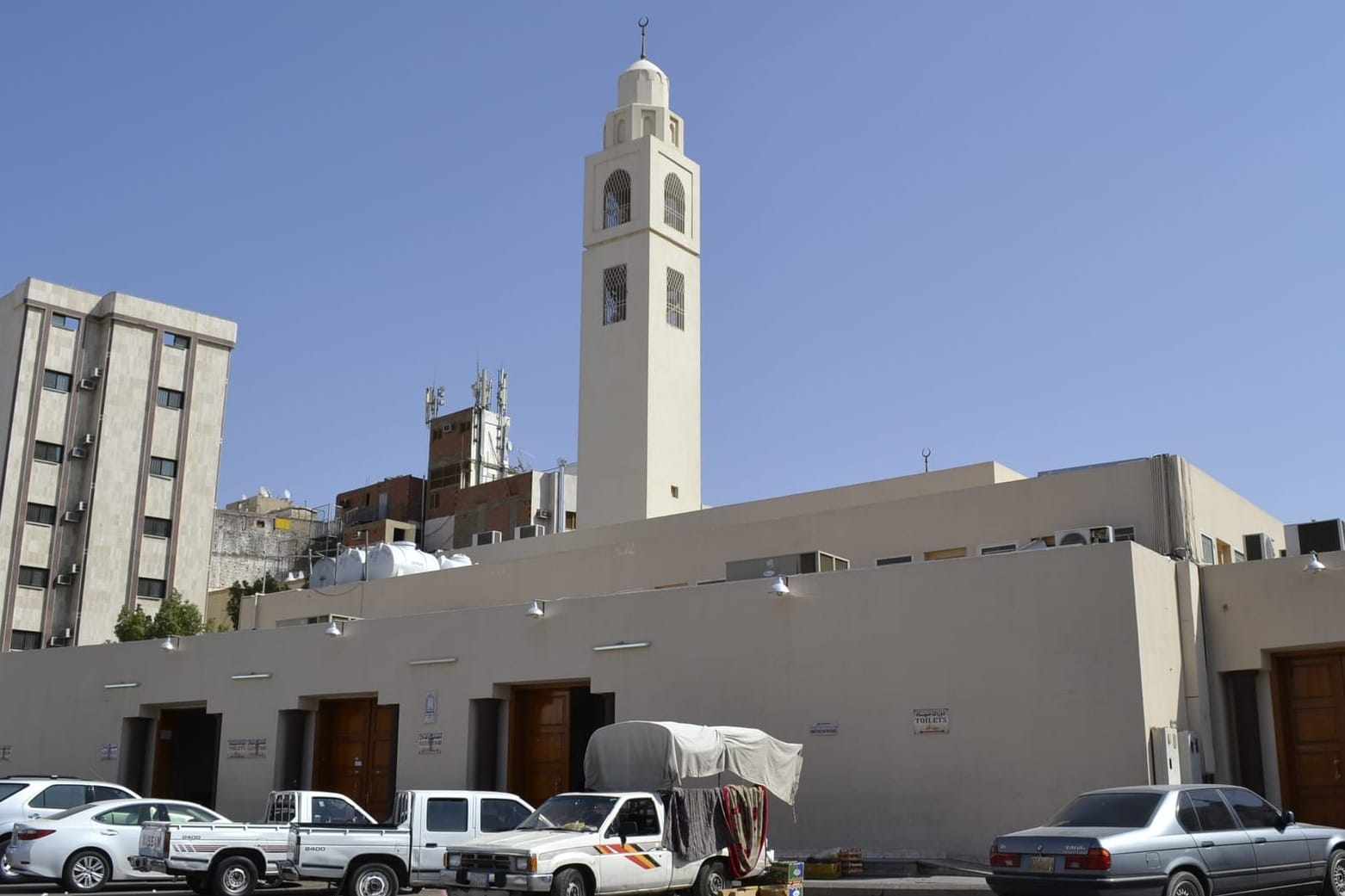
📍 Location: Al-Baqi district, northeast of Nabawi
- Highlights:
- Known for a du’a answered by Allah
- Tranquil and often quiet
- Ideal for personal reflection
8. Masjid Al-Miqat (Dhul Hulayfah / Abyar Ali)
This is the miqat station for pilgrims from Madinah intending to perform Hajj or Umrah. The Prophet (ﷺ) assumed Ihram from here, and it remains a sacred starting point for millions of pilgrims each year. Its large courtyard, modern facilities, and peaceful setting make it ideal for spiritual preparation.
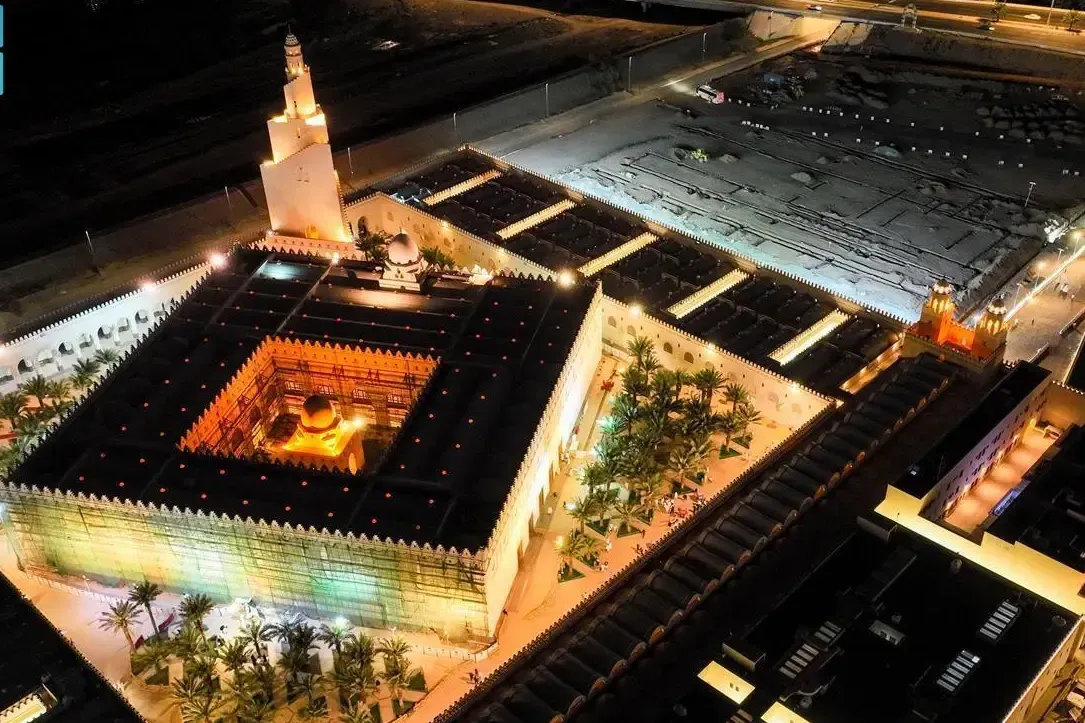
📍 Location: About 11 km from Madinah, southwest of the city center
- 🕌 Highlights:
- Ihram starting point for pilgrims
- Named “Abyar Ali” after a companion or linked to wells dug by Caliph Ali
- Equipped with changing areas, washrooms, and shaded prayer zones
What Is the Story of the Seven Mosques?
The Seven Mosques (Al-Masajid As-Sab’a) are a cluster of small mosques near the site of the Battle of the Trench (Ghazwa Khandaq) in Madinah. They are built to honor the Prophet Muhammad (ﷺ) and his key companions—like Ali ibn Abi Talib, Salman Al-Farsi, and Abu Bakr As-Siddiq—who played pivotal roles during the battle.
9. Masjid Abu Bakr Al-Siddiq
This mosque commemorates Abu Bakr Al-Siddiq (RA), the first Caliph of Islam and a close companion of the Prophet Muhammad (ﷺ). It is said that Abu Bakr led Eid prayers here during his leadership. The mosque is modest in size but carries great historical value, especially for those following the footsteps of the Sahabah (companions).
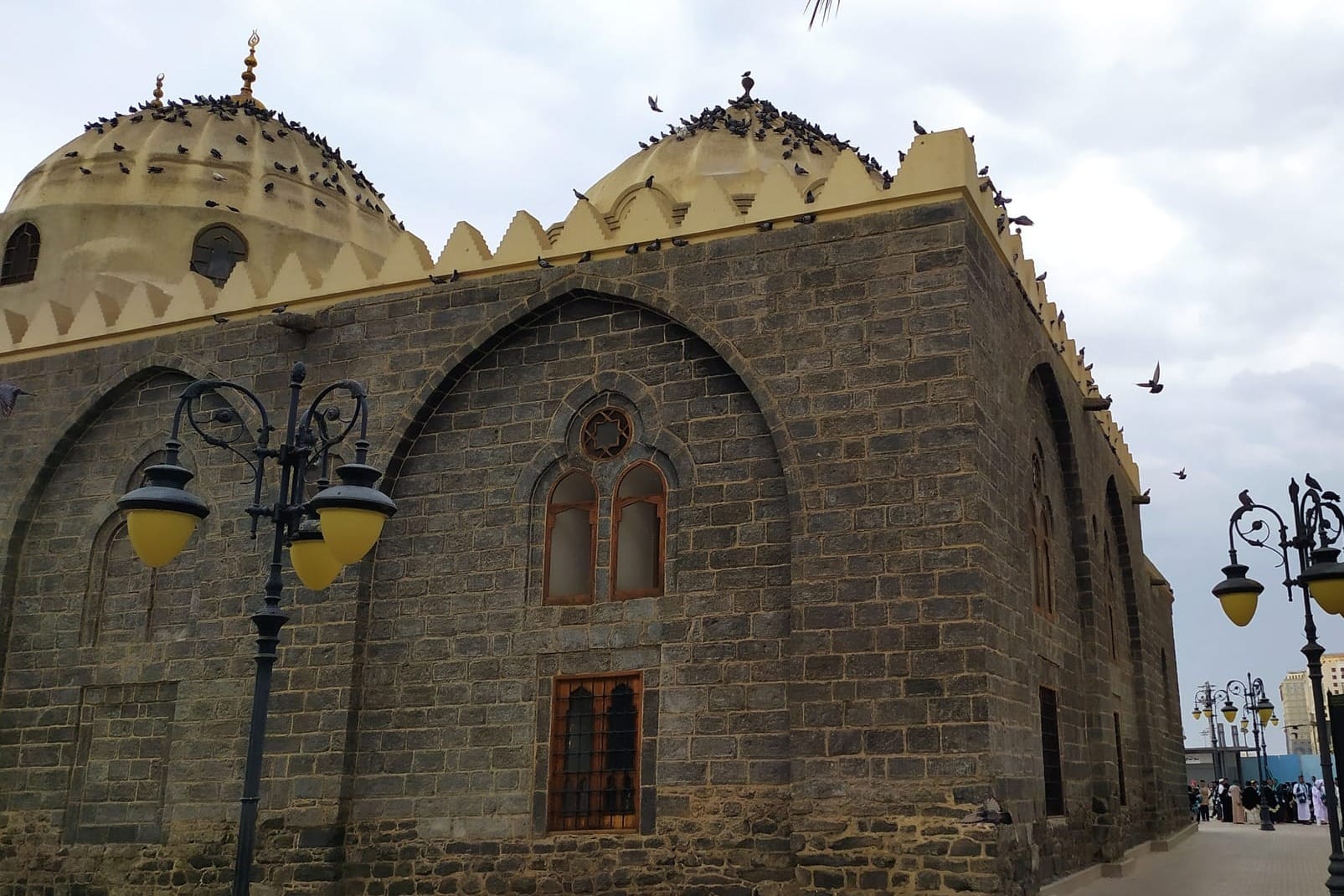
📍 Location: Near Masjid Al-Ghamama and the Prophet’s Mosque
- Highlights:
- Site associated with Caliph Abu Bakr’s prayer leadership
- Humble yet spiritually significant architecture
- Close to other key mosques, ideal for a walking ziyarat
10. Masjid Umar ibn Al-Khattab
Dedicated to Caliph Umar ibn Al-Khattab (RA), the second Caliph of Islam, this mosque is located in the same cluster as Abu Bakr’s and Al-Ghamama Mosque. Umar (RA) is remembered for his just rule, expansion of the Islamic state, and deep sense of accountability. Praying here is a tribute to one of Islam's most influential figures.
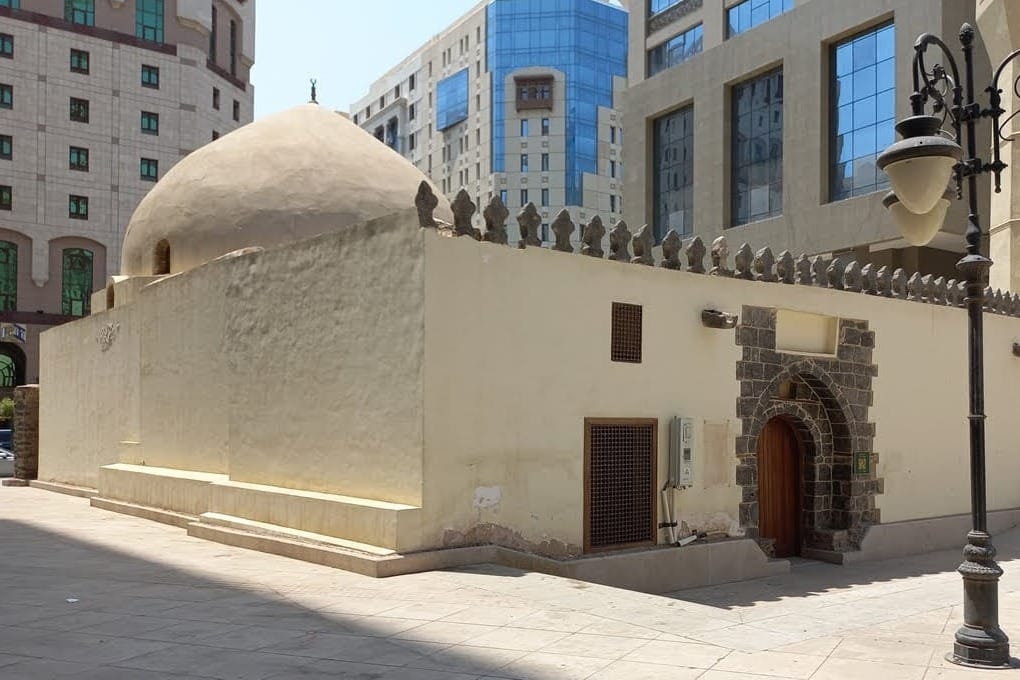
📍 Location: Adjacent to Al-Ghamama and Abu Bakr Mosques
- Highlights:
- Named after the “Al-Farooq,” a title for one who distinguishes right from wrong
- Simple yet reflective space
- Ideal for combining with a visit to other nearby mosques
11. Masjid Ali ibn Abi Talib
This mosque honors Ali ibn Abi Talib (RA), cousin and son-in-law of the Prophet (ﷺ) and the fourth Rightly Guided Caliph. It is part of the Seven Mosques cluster and is situated on higher terrain, reflecting Ali’s noble status and his valor during the Battle of the Trench.
What's the History of Masjid-e-Ali?
Historical accounts suggest that Ali (RA) was stationed in this area during the trench battle, which was a strategic defense plan to protect Madinah from the Quraysh and their allies. The mosque marks the spot where Ali (RA) is believed to have led prayers or stood guard.
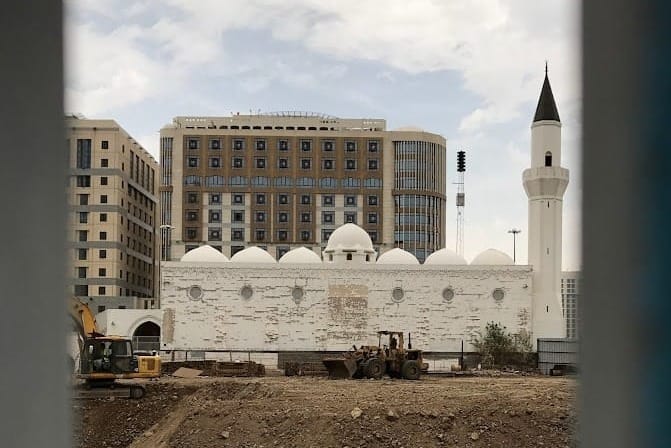
📍 Location: Among the Seven Mosques on Mount Sela
- Highlights:
- Historical connection to one of Islam’s most revered figures
- Elevated location provides serene city views
- Often less crowded, ideal for reflection
12. Masjid Salman Al-Farsi
Masjid Salman Al-Farsi is dedicated to Salman the Persian (RA), a companion famed for his strategic suggestion to dig the trench that protected Madinah from attack. His story represents the embrace of diverse cultures within Islam. The mosque stands in tribute to his wisdom and contribution.

📍 Location: In the Seven Mosques complex
- Highlights:
- Reflects Islamic inclusivity and strategy
- Named after the companion who proposed trench warfare
- A peaceful site nestled near Mount Sela
13. Masjid Al-Fath (Mosque of Victory)
Arguably the largest of the Seven Mosques, Masjid Al-Fath was built on the spot where the Prophet (ﷺ) is believed to have raised his hands in prayer during the Battle of the Trench. His dua for victory was answered, thus giving the mosque its name. This sacred site is powerful both symbolically and spiritually.
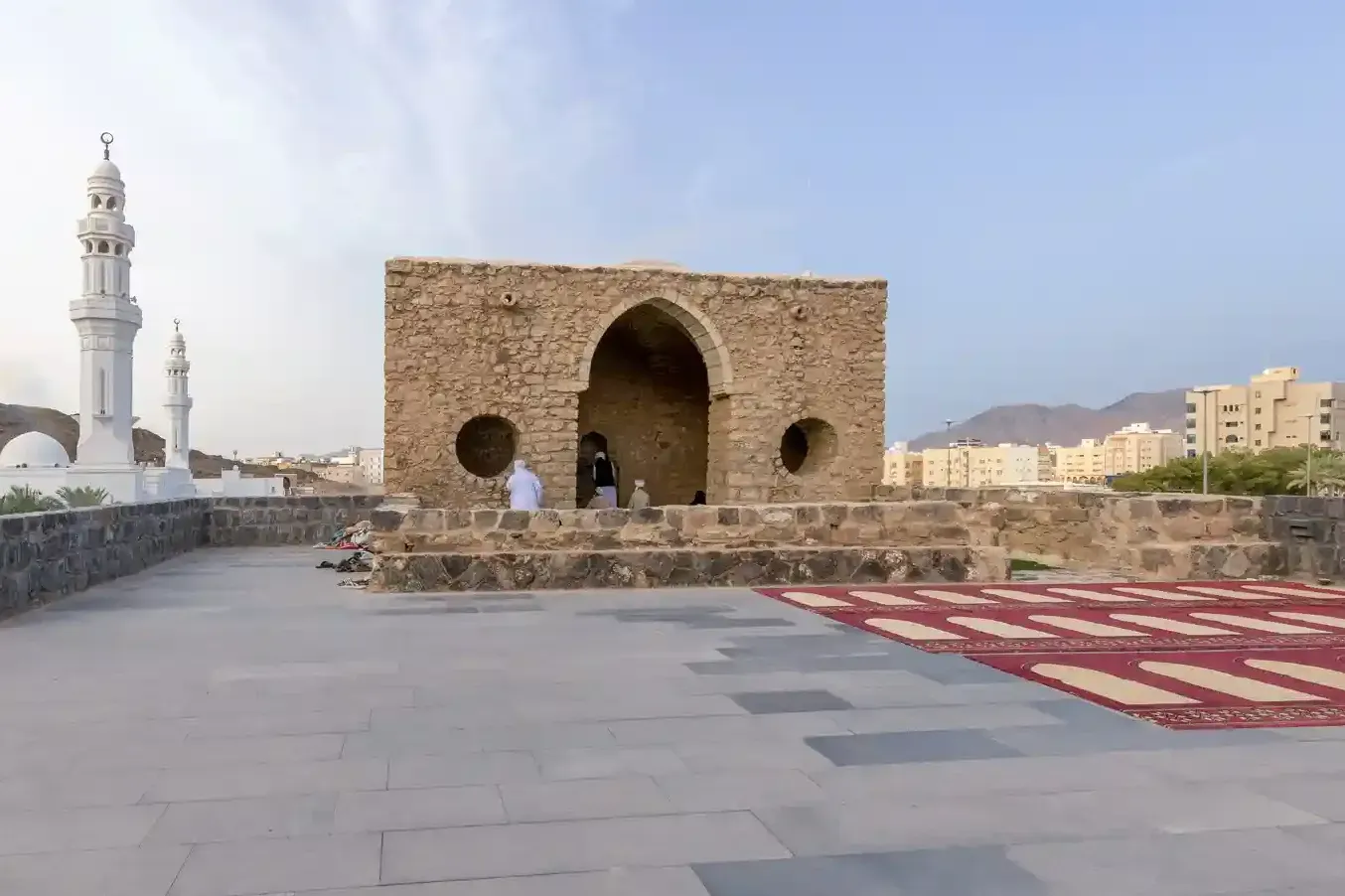
📍 Location: Seven Mosques vicinity, west of Madinah
- Highlights:
- Linked to divine intervention during the battle
- One of the most visited small mosques
- Offers views of Madinah’s historic battlefield terrain
Conclusion
Madinah’s mosques are more than places of worship—they are living chapters of Islamic history, echoing stories of faith, sacrifice, and divine connection from over 1400 years ago. Walking through their courtyards, praying where the Prophet (ﷺ) and his companions once stood, and reflecting on their legacy adds profound meaning to any visit. The Hop-On Hop-Off bus offers a convenient and enriching way to explore many of these sacred sites, especially for those short on time or seeking a narrated journey through the city's spiritual heritage. Mosques not covered by the route are still easily accessible via local taxis.
May your visit to Madinah be filled with peace, spiritual growth, and blessings that stay with you long after you’ve returned home.

